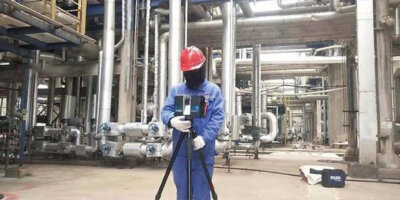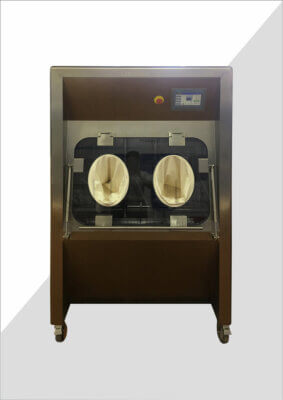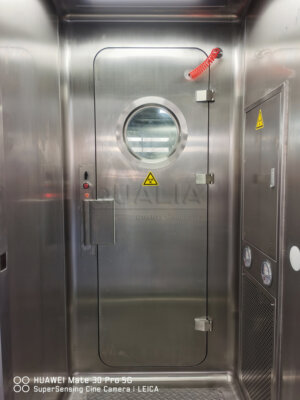In an era where environmental protection and public health are paramount, Malaysia has been making significant strides in implementing advanced effluent decontamination systems. These sophisticated technologies are crucial for ensuring that wastewater from various industries and facilities is properly treated before being released back into the environment. As Malaysia continues to develop its industrial and healthcare sectors, the importance of effective effluent decontamination cannot be overstated.
The landscape of effluent decontamination in Malaysia is characterized by a blend of innovative technologies, stringent regulations, and a growing awareness of environmental responsibility. From chemical-free thermal sterilization to advanced filtration methods, the country is embracing a wide array of solutions to address the complex challenge of wastewater treatment. This article delves into the current state of effluent decontamination systems in Malaysia, exploring the technologies, regulations, and future trends that are shaping this critical field.
As we transition into a more detailed examination of effluent decontamination systems in Malaysia, it’s essential to understand the driving forces behind their implementation and the impact they have on both industry and the environment. The following sections will provide an in-depth look at the various aspects of these systems, from their technological foundations to their practical applications across different sectors.
“Effluent decontamination systems in Malaysia are not just a regulatory requirement but a critical component in the nation’s commitment to environmental sustainability and public health protection.”
To provide an overview of the key components in effluent decontamination systems commonly used in Malaysia, here’s a comparison table:
| Technology | Method | Application | Effectiveness |
|---|---|---|---|
| Thermal Sterilization | Heat treatment | Biological waste | High |
| Chemical Treatment | Disinfection agents | Industrial effluents | Moderate to High |
| Membrane Filtration | Physical separation | Various industries | High |
| UV Radiation | Light exposure | Water purification | Moderate |
| Activated Sludge | Biological treatment | Municipal wastewater | High |
What are the primary technologies used in Malaysian effluent decontamination systems?
Effluent decontamination systems in Malaysia employ a diverse range of technologies to address the varying needs of different industries and waste types. At the forefront of these technologies is thermal sterilization, which has gained significant traction due to its effectiveness and environmental friendliness.
One of the leading solutions in this field is the ‘AstellBio Sink’ offered by (QUALIA). This innovative system provides chemical-free wastewater decontamination through thermal sterilization, ensuring that harmful pathogens and contaminants are effectively neutralized before the effluent is discharged.
The thermal sterilization process typically involves heating the effluent to temperatures of 121°C or higher, which is sufficient to eliminate most biological contaminants. This method is particularly effective for treating wastewater from laboratories, healthcare facilities, and biohazard environments.
| Technology Feature | Benefit |
|---|---|
| Chemical-free | Environmentally friendly |
| High temperature | Effective pathogen elimination |
| Automated process | Reduced human error |
| Compact design | Suitable for various settings |
“Thermal sterilization technologies, such as those employed in the AstellBio Sink, represent a significant advancement in effluent decontamination, offering a safe and efficient solution for handling hazardous liquid waste in Malaysia.”
How do Malaysian regulations impact effluent decontamination practices?
The regulatory framework in Malaysia plays a crucial role in shaping the landscape of effluent decontamination practices across the country. The Department of Environment (DOE) under the Ministry of Natural Resources and Environment is responsible for setting and enforcing standards for effluent discharge.
Malaysia’s Environmental Quality Act 1974 and its subsequent amendments provide the legal basis for effluent management. The regulations stipulate specific parameters for effluent quality, including biochemical oxygen demand (BOD), chemical oxygen demand (COD), total suspended solids (TSS), and pH levels, among others.
These regulations have led to the adoption of more sophisticated effluent decontamination systems by industries across Malaysia. Companies are required to install and maintain proper treatment facilities to ensure compliance with the discharge standards.
| Regulatory Aspect | Requirement |
|---|---|
| BOD limit | ≤ 20 mg/L |
| COD limit | ≤ 50 mg/L |
| TSS limit | ≤ 50 mg/L |
| pH range | 6.0 – 9.0 |
“Malaysian regulations on effluent discharge have been instrumental in driving the adoption of advanced decontamination technologies, ensuring that industries take responsibility for their environmental impact.”
What industries in Malaysia benefit most from advanced effluent decontamination systems?
In Malaysia, several key industries have emerged as primary beneficiaries of advanced effluent decontamination systems. The palm oil industry, a significant contributor to the country’s economy, has been at the forefront of adopting these technologies due to the high organic content of its wastewater.
The semiconductor and electronics manufacturing sector, which has a strong presence in Malaysia, also relies heavily on sophisticated effluent treatment systems to manage the complex chemical waste produced during production processes.
Additionally, the healthcare sector, including hospitals and research laboratories, has seen a growing need for advanced effluent decontamination systems to handle potentially infectious waste safely. The ‘Effluent Decontamination System – EDS’ and similar systems have found particular application in these settings, offering a reliable solution for treating biohazardous liquid waste.
| Industry | Primary Contaminants | Preferred Treatment Method |
|---|---|---|
| Palm Oil | Organic matter, oils | Biological treatment, membrane filtration |
| Electronics | Heavy metals, solvents | Chemical treatment, ion exchange |
| Healthcare | Pathogens, pharmaceuticals | Thermal sterilization, UV disinfection |
“The diverse industrial landscape of Malaysia necessitates a range of effluent decontamination solutions, with each sector adopting technologies best suited to their specific waste profiles and regulatory requirements.”
How is Malaysia addressing the challenges of industrial effluent management?
Malaysia’s approach to industrial effluent management is multifaceted, combining regulatory measures with technological innovations and public-private partnerships. The government has implemented a series of initiatives to encourage industries to adopt cleaner production methods and more efficient effluent treatment systems.
One such initiative is the Green Technology Financing Scheme, which provides financial incentives for companies investing in environmentally friendly technologies, including advanced effluent decontamination systems. This has spurred the adoption of state-of-the-art treatment technologies across various industries.
Furthermore, Malaysia has been investing in research and development to develop locally adapted solutions for effluent treatment. Collaborations between universities, research institutions, and industry partners have led to the development of innovative technologies tailored to the specific needs of Malaysian industries.
| Initiative | Objective | Impact |
|---|---|---|
| Green Technology Financing Scheme | Promote eco-friendly technologies | Increased adoption of advanced treatment systems |
| R&D Collaborations | Develop local solutions | Customized technologies for Malaysian industries |
| Regulatory Enforcement | Ensure compliance | Improved overall effluent quality |
“Malaysia’s proactive approach to industrial effluent management, combining financial incentives, research initiatives, and stringent regulations, is setting a benchmark for developing nations in addressing environmental challenges.”
What role do effluent decontamination systems play in Malaysia’s public health initiatives?
Effluent decontamination systems play a crucial role in Malaysia’s public health initiatives, particularly in the context of disease prevention and environmental safety. By ensuring that wastewater from healthcare facilities, research laboratories, and other potentially hazardous sources is properly treated, these systems act as a critical barrier against the spread of infectious diseases.
The COVID-19 pandemic has further highlighted the importance of effective effluent decontamination in public health management. Systems like the (QUALIA) have become essential in laboratories and hospitals handling COVID-19 samples and patients, ensuring that any potentially contaminated liquid waste is safely sterilized before disposal.
Moreover, the proper treatment of industrial effluents contributes to the overall health of ecosystems and, by extension, the health of communities that depend on these natural resources. By reducing the release of harmful chemicals and pathogens into the environment, effluent decontamination systems help protect water sources and minimize the risk of waterborne diseases.
| Health Aspect | Contribution of Effluent Decontamination |
|---|---|
| Disease Prevention | Neutralization of pathogens in wastewater |
| Environmental Protection | Reduction of pollutants in water bodies |
| Occupational Safety | Safe handling of hazardous liquid waste |
| Public Confidence | Assurance of proper waste management |
“Effluent decontamination systems are an integral component of Malaysia’s public health infrastructure, serving as a critical line of defense against the spread of diseases and environmental contamination.”
How are emerging technologies shaping the future of effluent decontamination in Malaysia?
The landscape of effluent decontamination in Malaysia is continually evolving, driven by emerging technologies and innovative approaches. One of the most promising developments is the integration of Internet of Things (IoT) and artificial intelligence (AI) into effluent treatment systems, allowing for real-time monitoring and automated adjustments to treatment processes.
Nanotechnology is another field that holds great potential for enhancing effluent decontamination. Nanomaterials are being explored for their ability to remove specific contaminants more effectively and efficiently than traditional methods. This could lead to more targeted and energy-efficient treatment processes.
Additionally, there is growing interest in resource recovery from effluents. Advanced systems are being developed to not only treat wastewater but also extract valuable resources such as nutrients, energy, and even rare metals. This approach aligns with circular economy principles and could transform effluent treatment from a cost center to a potential revenue stream for industries.
| Emerging Technology | Potential Application | Expected Benefit |
|---|---|---|
| IoT and AI | Real-time monitoring and control | Improved efficiency and compliance |
| Nanotechnology | Enhanced contaminant removal | More effective treatment |
| Resource Recovery | Extraction of valuable materials | Economic and environmental benefits |
“The future of effluent decontamination in Malaysia is being shaped by cutting-edge technologies that promise not only more effective treatment but also the potential to turn waste into valuable resources.”
What are the economic implications of advanced effluent decontamination systems for Malaysian businesses?
The implementation of advanced effluent decontamination systems presents both challenges and opportunities for Malaysian businesses. On one hand, the initial investment in these technologies can be substantial, requiring significant capital expenditure. This can be particularly challenging for small and medium-sized enterprises (SMEs) that may have limited financial resources.
However, the long-term benefits of these systems often outweigh the initial costs. Advanced effluent treatment technologies can lead to reduced water consumption through recycling and reuse, resulting in lower operational costs over time. Additionally, compliance with environmental regulations helps businesses avoid costly fines and potential shutdowns, protecting their reputation and market position.
Furthermore, as global markets increasingly prioritize environmental responsibility, Malaysian companies with advanced effluent decontamination systems may gain a competitive edge in international trade. This is particularly relevant for industries such as electronics and textiles, where environmental standards in supply chains are becoming more stringent.
| Economic Factor | Short-term Impact | Long-term Benefit |
|---|---|---|
| Initial Investment | High capital cost | Reduced operational expenses |
| Regulatory Compliance | Implementation costs | Avoidance of fines and penalties |
| Market Competitiveness | Potential price increases | Enhanced global market access |
“While the adoption of advanced effluent decontamination systems may present initial financial challenges for Malaysian businesses, the long-term economic benefits in terms of operational efficiency, regulatory compliance, and market competitiveness are substantial.”
In conclusion, effluent decontamination systems play a pivotal role in Malaysia’s environmental protection and public health strategies. From cutting-edge thermal sterilization technologies like the ‘AstellBio Sink’ to emerging nanotechnology applications, the field is rapidly evolving to meet the complex challenges of wastewater treatment.
The regulatory framework in Malaysia has been instrumental in driving the adoption of these advanced systems across various industries, from palm oil production to healthcare. As the country continues to balance economic growth with environmental sustainability, effluent decontamination systems will remain a critical component of its industrial and public health infrastructure.
Looking ahead, the integration of smart technologies, the focus on resource recovery, and the growing emphasis on circular economy principles are set to transform effluent decontamination from a necessary cost to a potential source of value. For Malaysian businesses, staying abreast of these developments and investing in advanced effluent treatment technologies will be key to maintaining competitiveness in an increasingly environmentally conscious global market.
As Malaysia moves forward, the continued advancement and widespread implementation of effluent decontamination systems will not only safeguard the nation’s natural resources but also contribute to its reputation as a leader in sustainable industrial practices in Southeast Asia.
External Resources
- Effluent Decontamination System EDS – Kumpulan Saintifik (KSFE) – This page describes the Effluent Decontamination System (EDS) offered by KSFE, including the AstellBio Sink, which provides chemical-free wastewater decontamination through thermal sterilization.
- Astellbio Sink, Effluent Decontamination System – Details the AstellBio Sink, an Effluent Decontamination System designed for laboratory settings, which uses thermal sterilization to decontaminate liquid waste automatically.
- Biosafety – Effluent Decontamination System – Gaia Science – Gaia Science offers Thermal Batch-Effluent Decontamination Systems (EDS) that meet the 121°C standard, providing a solution for biosafety and effluent decontamination in various scientific settings.
- Produits | Actini Group – Actini Group specializes in liquid effluent decontamination and sterilization, offering a range of standard and customized equipment for laboratories, vaccine manufacturers, and other industries.
- Superior Chemical Cleaning and Decontamination – CR3 Group – Although primarily focused on chemical cleaning, CR3 Group’s decontamination projects, such as the one at a petrochemical plant in Malaysia, involve advanced methods for eliminating toxic substances and hydrocarbon deposits.
Related Contents:
- Navigating Regulatory Waters: Effluent Treatment in Biopharma
- Thermal Effluent Decontamination: Protecting Our Environment
- Effluent Decontamination: Essential for High-Risk Labs
- Continuous Effluent Decontamination: Protecting Our Environment
- Effluent Decontamination: Ensuring Pharmaceutical Safety
- Effluent Decontamination Systems for Biosafety Laboratories
- Effluent Decontamination: Safeguarding Our Environment
- The Battle of Decon: Chemical vs. Thermal Methods
- Navigating the Complexities of High-Potency API Effluent Management





























